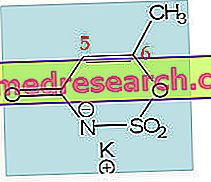Generality
Twins are individuals born from a single pregnancy. This event, although common in many mammals - such as dogs or cats - is relatively rare in humans, so that the incidence of twin pregnancies is around 1.5% of all gestations.
In any case, the probability that the mother gives birth to two or more twins seems to be linked - among other things - to heredity (on a maternal basis), to the race (maximum incidence among the blacks, minimum among the Orientals) and to the age of the mother.
In recent years the cases of twin or multi-pearl pregnancies have increased, both due to the increase in the average age of pregnant women, and to the increasingly frequent use of pharmacological therapies against hypofertility (which stimulate ovulation) and fertilization techniques assisted.
Two categories of twins are distinguished:
HOMAZYGOT Twins : also called monoovular or monochorionic;
HETERZIGOUS CUFFLINKS : also called biovoular, bicultural or bizygotic.
Biovular twins are born in about 65-75% of multiple pregnancies, while the remaining 25-35% of cases are covered by mono-vascular individuals.
Homozygous twins
The homozygous twins derive from the same zygote, which in an early stage of its development is divided into two or more parts (the zygote is the cell that is formed by the union of the spermatozoon with the egg cell during fertilization).

Heterozygous twins
The heterozygous twins (see figure) derive from two or more distinct egg cells, fertilized - almost simultaneously - by two or more spermatozoa; as such, they are distinguished by their appearance (their degree of similarity is analogous to that found between brothers) and genetic heritage (the blood group is the same, the same in homozygotes, and sometimes sex). In theory, it is possible that the father of twins is different, as happens when distinct oocytes are fertilized within a short time but in two different coitus.
Risks for the Mother
The multiple pregnancy involves a greater risk of gestosis, abortion and premature birth (on average the gestation ends about three weeks before the expected date); this requires particularly scrupulous prenatal care, which has proven to be able to significantly reduce the incidence of these complications.



